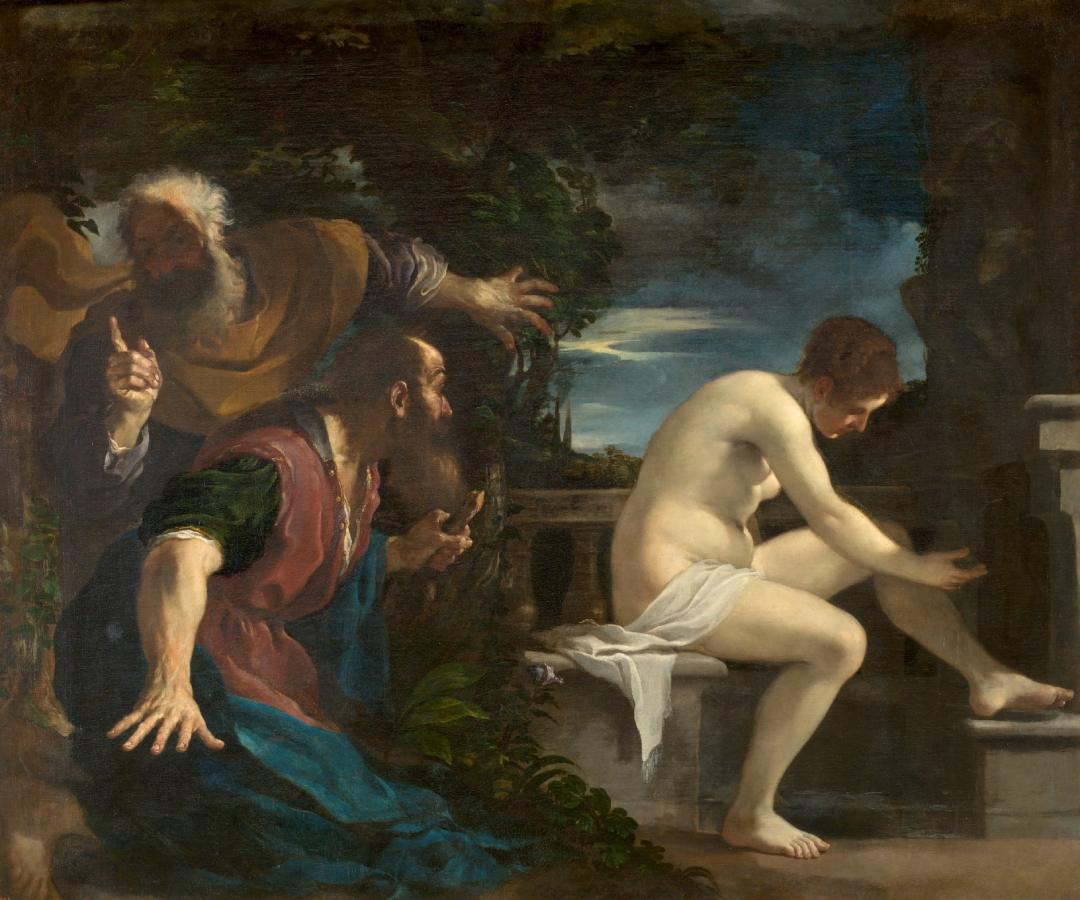Guercino (1591-1666)
Susanna e i vecchioni (Susanna and the Elders)
1617
Oil on canvas, 176 x 208 cm
Museo del Prado, Madrid
Historian Denis Mahon has masterfully shown that this painting and two other famous works by Guercino –Lot and his daughters (Monastery of El Escorial, Madrid) and The return of the Prodigal Son (Galleria Sabauda, Turin)- were painted for Cardinal Alessandro Ludovisi in 1617 and 1618, while the artist was in Bologna.
According to the Old Testament (Daniel:13), Archian and Sedechia were two elderly judges who regularly visited the home of a rich man named Joachim to discuss certain cases. One hot day, Joachim’s wife, Susanna, was bathing in one of the fountains at her house without noticing that the old men were watching her from a hiding place. They had desired her for quite some time, and on this occasion tried to molest her. After Susanna resisted them, they accused her of adultery. Judge Daniel demonstrated her innocence and the death sentence was handed down to the two old men. This legend was a favourite of sixteenth and seventeenth-century artists, as it offered them an opportunity to depict a scene charged with eroticism and to display their skills at representing nudes.
In a later work, Guercino portrayed the moment when the old men actually molest the young woman as she fights them off, but here he shows them observing her from their hiding place, capturing a moment of great physical and psychological tension. That tension is also present in the composition, which divides the canvas into two parts. The left is dominated by a naturalistic depiction of the old men, with a dramatic chiaroscuro that accentuates the violent affetti (movements of their souls) derived, in this case, from their libidinous desires. The contrasting colours of their clothing, and its movement as they gesture, reinforce the violence. All of this contrasts with the classicism of Susanna’s body, to the right, which stands out for its gentle monochromatic appearance. The roughness of the old men is superseded by the idealised nude of the young woman, whose full illumination makes her movements seem even slower in comparison to the frenzy of the old men in the shadows. Moreover, the latter are dressed, while she is not, which leads the viewer to behave like another voyeur, fixing his or her gaze on Susanna’s nude body. The flowers (probably lillies) in the middle of the composition have always been linked to candour and purity, which are also the young woman’s virtues.
One of the old men leans into the viewer’s space, extending his hand to warn us to keep still, so as not to alert Susanna to our presence. Thus, Guercino makes us participants in this sinful moment. With these two gestures -one directed at our soul and the other at our body- Guercino draws us into the story while simultaneously placing us outside the shadow that shelters the old men. Both the old men and viewers alike are thereby free to contemplate Susanna’s nudity as they please. The artist’s inspiration for her pose and form was the sculpture Crouching Aphrodite, apparently created by Greek sculptor Doidalsas in the second half of the third century BC and known in the modern era through numerous copies and replicas. This fact is enough to indicate that, notwithstanding traditional belief, the essentially intuitive nature of this painter’s training may be purely visual.
Riello,J, Guercino ‘Susanna and the Elders’ En: Italian masterpieces from Spain’s royal court, Museo del Prado, National Gallery of Victoria Thames & Hudson, 2014, p.158.
